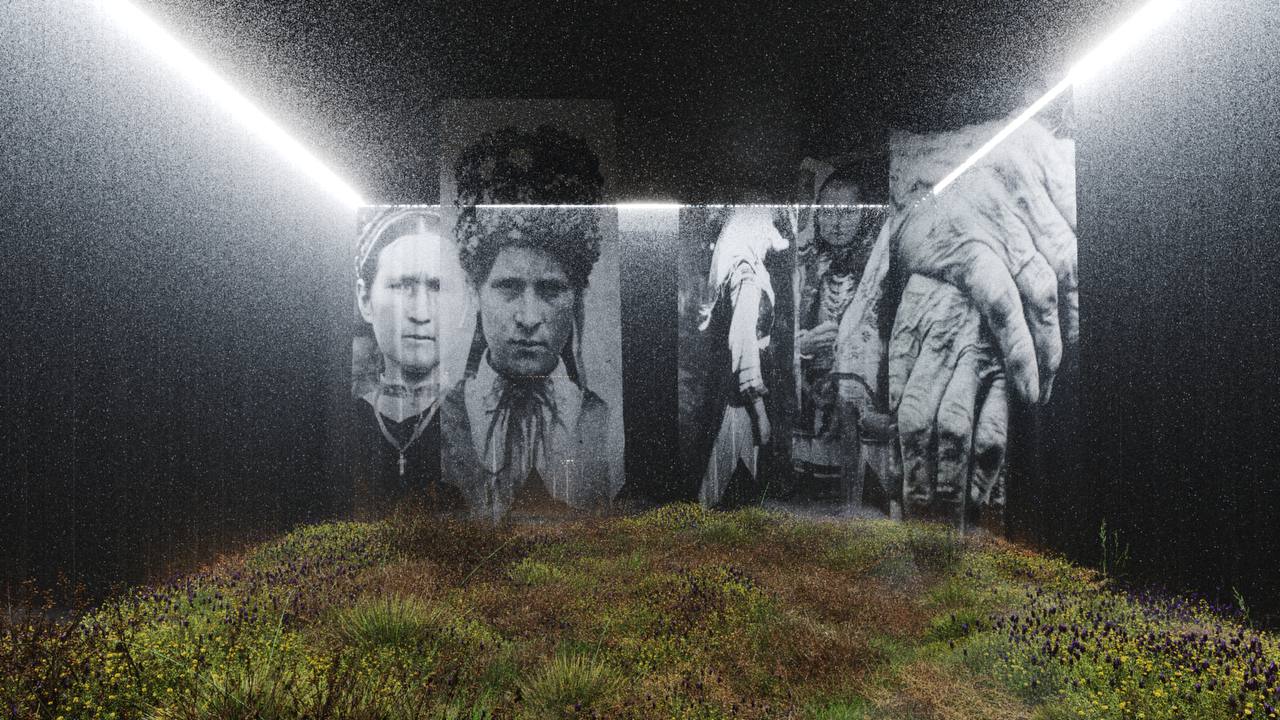DRYGVA. BREATHE IN BREATHE OUT.

Maria Gvardeitseva
With her project DRYGVA. BREATHE IN BREATHE OUT. Maria Gvardeitseva rediscovers her roots and vanishing memory of original Belarus identity. DRYGVA’S story started with a childhood memory and grew into a complex fairytale-like universe. The immersive space recreates a marshland with its unstable soil, warm scented air; opaque colors and softness of light. Fluctuation and instability are the rudiments of swamp’s nature. In this place the impossible meets the probable and the holy co-exists with the obscure. A swamp is always about transcendency. The limit between water and earth, life and death, birth and resurrection is unsure in marsh’s mist. Once on a shaky surface, Drygva inevitably turns every visitor into a wanderer who loses his footing and instantly falls into a new world, where ancient legends, whispered like secrets, follow every step of an unexpected journey. One deep breath at the time.
Some of Belarus swamps are more than 11 000 years old and once occupied a territory of 2939 hectares. Today, more than half of them remain and cover about fourteen percent of the country. The ecological impact of marshlands had been underestimated for a long time which caused massive drainages. When studies showed that one hectare of marshland purifies as much air as thirteen hectares of primary forest, swamps became protected patrimony. Yet, marshlands’ fundamental implication for the Belarus culture is way more meaningful. Swamps appeared on these territories much earlier than the first humans did. As a matter of fact, Belarus cultural identity and History have been growing from and around swamps from their very beginning. A huge number of myths and legends are born out of the unstable and mysterious nature of marshlands. Vitebsk swamps were believed to be home to dragons named Tsmoks and magic fern flowers. Polissya swamps – the Adder King’s lands – host furtive amber castles, surrounded by magical creatures and wandering lights. Nowadays, the swamps are almost the only guardians of the original Belarusian identity, diligently and methodically exterminated by the government of the country. One of the objectives of the installation is to enable the viewer to get in touch with this disappearing patrimony.
Enigmatic nature of marshlands hid and protected Belarusians for ages. Many remaining settlements dating back to the 16-17th centuries whitness this connection. Thus, marshlands made their way to Belarus literature and art. “People in the Marsh” by Melezh; “Polesye Robinsons’ ‘ by Mavra, as well as works of Ianka Kupala, Yakub Kolas and Bogdanovich are only a couple of names among others. Yet, very few female artists in this list staggered Maria while her research and this discovery became Drygva’s upshot. While putting pieces together Maria faced the fact that the birthplace of Belarussian culture also remained a prison of “invisible existence” for local women. The paradox of the situation is reinforced by the fact that the nature of the swamps resonates with the feminine as such: ambivalent, unstable, in a state of constant transformation and balancing on the verge of “ in between”.
To offer a resolution, Maria puts Belarus women in the spotlight by introducing the series of portraits on cloth. This is her tribute to sculptor Helena Skyrmunt, naive artist Alena Kish, painter Maria Gażycz, writer Anna Strunsky, poet and educator Vera Maslovskaya as well as craftswomen, herbalists and healers. Like fireflies these women guide the traveler in Maria Gvardeitseva’s marshland universe, where they resurrect and sparkle in the tender and mysterious heartbeat of DRYGVA.
Installation DRYGVA. BREATHE IN BREATHE OUT. got to the final selection for Belarus pavilion on Venice Biennale 2022. Due to Maria’s political opinions project got censored. Belarus pavilion did not open this year.
16.09.2022. – 30.09.2022.







